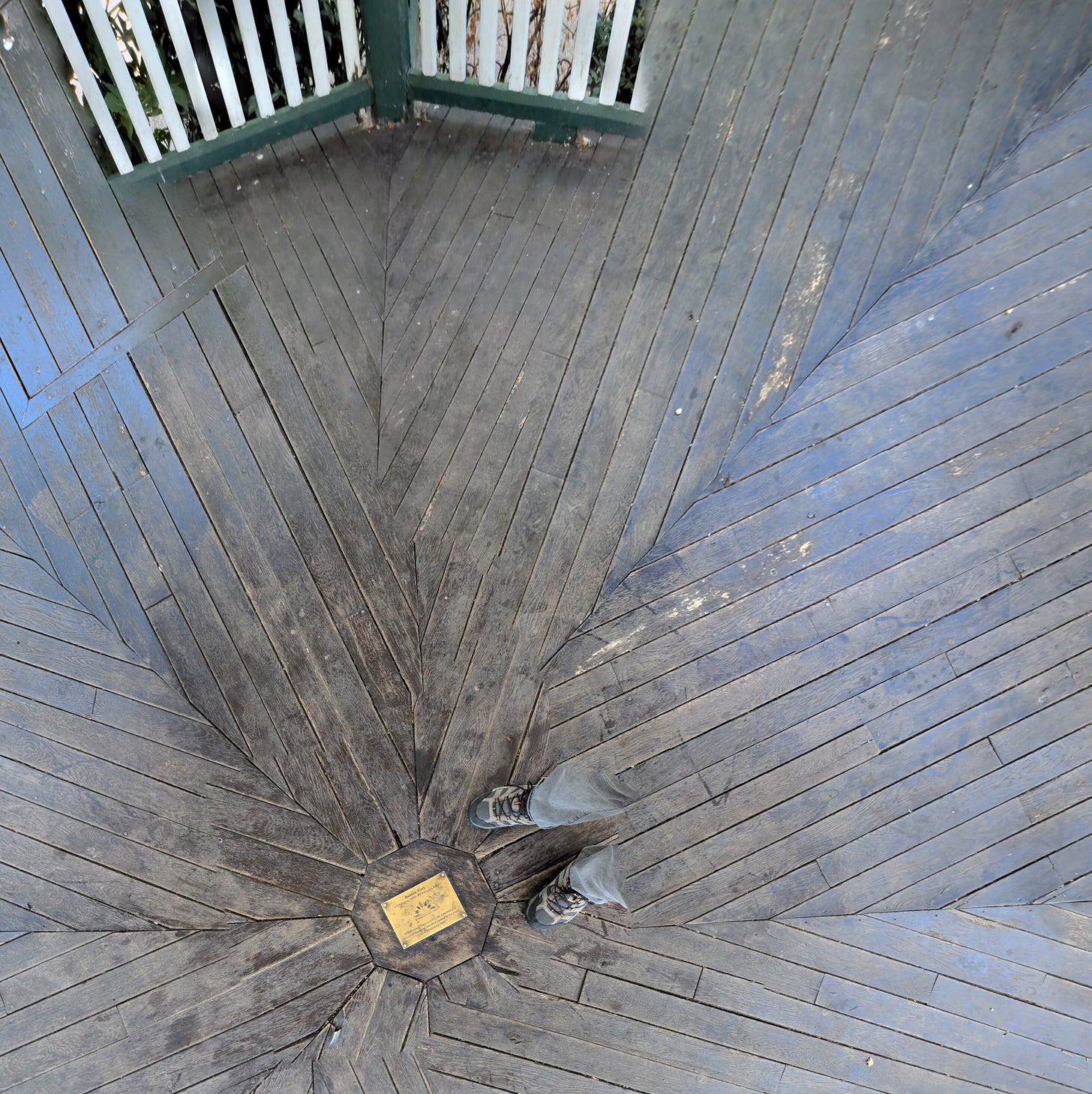It’s a well worn opinion that writing poetry is not always good for your mental wellbeing. That may be the case but writing haiku has always been a boon to my mental health. All a haiku really requires is that you notice and occupy a moment in the world and snatch something from it. Focus on one image or sound and notice that image’s obverse within its surroundings.
paddling pool ripples — shadow of the hospital incinerator
I wonder what John Ruskin would have thought of the park that was named after him? Much like any other inner city green space, industrialisation looms at every extremity. It’s not so much an escape from the clamour of city life as it is a recontextualisation of it. Much like the two contrasting images within the haiku, the ideas of industry and nature cling together in restful unease within a city’s parks. So it is with Ruskin Park, with the looming incinerator and helicopter pad of Kings College Hospital on one side and the busy stretches of railway on the other.
haulage cars clank through — cargo of rust and graffiti
As far as writing haiku in English is concerned, the 5/7/5 syllable requirement acts as a set of training wheels. Most never get beyond thinking of the haiku as a seventeen syllable epigram. Others, on understanding the differences in stress and rhythm between the Japanese and English languages, as well as learning the open, image driven aspects of the form, begin to feel confident in dropping some syllables here or there. English language haiku tend to pare away redundancy to the point where the images appear in the way that they do within experience. Unanticipated, unasked for and fleeting.
dead insects bob about the shallows — stubborn daydreams
Once you stop finger counting the syllables and really focus on the images, the single-line haiku, or monoku, becomes a natural development. As you probably already know, Japanese haiku are not split into three line. Instead, the 5/7/5 division is implied within the rhythm and imagery of the single line, with the cutting word (or kireji) denoting the shift between images. It’s easy to get caught up in the idea of a “proper haiku” but when seeing all of the rules and conventions that surround the Japanese form, as well as all the famous breaks in those conventions, I prefer to write something that simply has the feel of a haiku to me.
my pale shins meet the midday sun — twitching butterfly
The haiku also tends to squarely place itself within the realm of nature, whereas the senryu operates from a more human perspective. The inner city park may ape the hues of nature with its long lawns and flowering shrubs, but it bustles with the hubbub of humanity. Silly, bald white men glug cans of strong beer with their shirts off. Hospital workers smoke in the shade of peeling plane trees. A dog that looks like a cross between a bull terrier and German Shepherd bounds past me and my kids with a thick stick lodged within its jaws. It revels in its power, the torque of its bite matching the explosiveness of its sprint. The owner inspects some wild flowers many feet back. I cannot tell if her control of the animal is absolute or non existent as I place my palms onto my children’s shoulders.
between the pit bull and the squirrel — a blip of tranquility
While visiting the band stand on the way home, I try using my phone’s “photo sphere” function, the one that stitches lots of images into a 360 replication of the scene. The app isn’t working so I end up with some fractured collages of floorboards instead. I like it though. By many accounts, the brain doesn’t smoothly reassemble all of this fragmentary sensory information into a smooth, continuous representation. It’s more that we delude ourselves that the fragments are part of some smoother continuum. Again, it’s the haiku that seems to get closest to capturing the sharp, immediate sheen of each moment. When I write them, I feel as if I’m somehow closer to truth.








Share this post